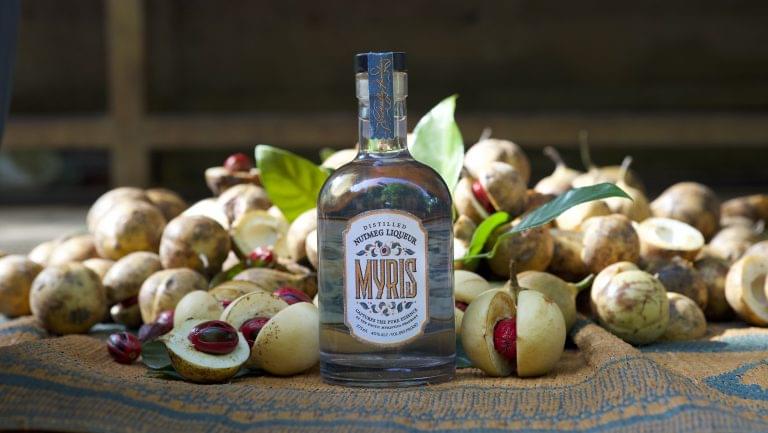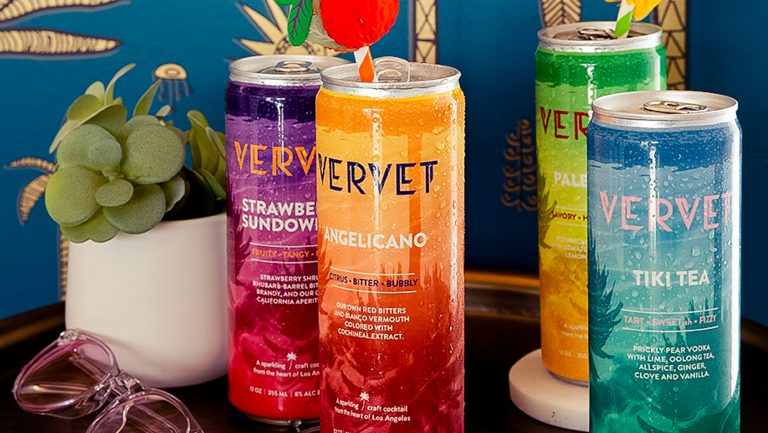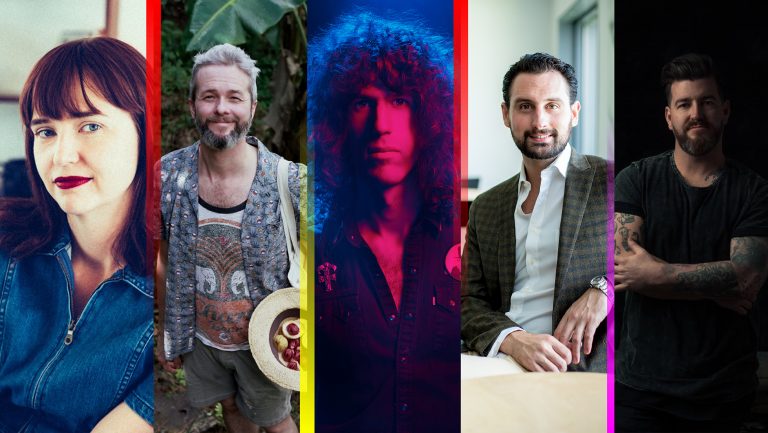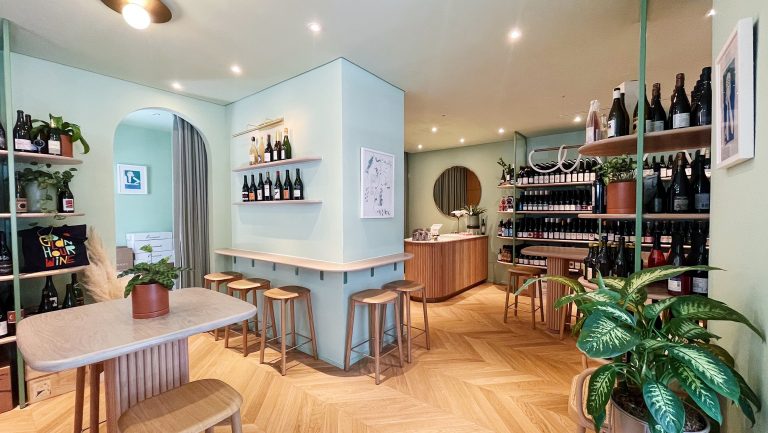The upward trajectory of the RTD category, in motion long before the pandemic, has only accelerated since March. According to a November 2020 market report by the IWSR, volume is predicted to be larger than the entire spirits category in just five years.
Bartenders, ideally positioned to capitalize on this extraordinary demand in canned cocktails, have been driving the trend towards premiumization, with a flurry of new bar-quality craft cocktails hitting the market in recent months.
SevenFifty Daily spoke to a number of bartenders to understand their diverse roadmaps for success.

Don’t miss the latest drinks industry news and insights. Sign up for our award-winning newsletters and get insider intel, resources, and trends delivered to your inbox every week.
Take Advantage of Relaxed Laws—and Bartender Star Power
The recently changed cocktails-to-go rules in many states “opens up an opportunity for bartenders that they never had,” says Charles Joly, World Class-winning Chicago bartender and cofounder of Crafthouse Cocktails. In Florida and New York, for instance, restaurants have been permitted to sell cocktails to-go in sealed containers as part of take-out and delivery orders since March. “Now, you can test-market locally from your bar,” he adds.
New businesses, such as Canned Cocktail Company, enable bartenders to can their custom cocktails on-premise by bringing the canning equipment to the bar. “We are very bespoke; we can each one individually,” says founder Kelly Levison. Currently servicing the northeast and California’s Lake Tahoe area, the company charges $2.75 per can, which decreases to $2 per can for orders over 500. It’s a relatively expensive yet turnkey, low-risk packaging solution for bartenders looking to test the market before launching a brand formally.
Some bartenders are finding success with RTDs by simply providing know-how—and leveraging their brand power—to other companies. For instance, the RTD brand F!ve Drinks Co. launched several new canned cocktails with famed New York City bar Dante in Fall 2020 via a licensing agreement whereby Dante was paid for their expertise and brand power. “These cocktails were created by Dante’s team,” notes F!ve Drinks CEO Felipe Szpigel.
Bartenders have to be careful as they launch brands on a larger scale because of tied house laws and the three-tier system. Hope Ewing, the cofounder of sparkling canned cocktail brand Vervet, which was launched in Los Angeles in January 2019, notes that she had to stop working behind the bar when she decided to own an alcohol brand because federal and state laws generally prohibit brand owners from also having an interest in a bar.

Creating a Strong—and Trademarked—Brand
Cocktail brand entrepreneurs should create a formal company to shield personal assets from liability if the company gets sued. Many choose to form an LLC, but an accountant or lawyer can explain the specific benefits of one type of entity versus another for each specific situation. The company will then enter into contracts with bottlers, suppliers, distributors, and other parties going forward.
It will also be the company that ultimately owns the brand’s trademark, which is where so much of the brand’s value ultimately resides. Trademarking the brand is an early and critical step, especially since the process can take several months. “Do research and be ready, willing, and able to pivot,” says bartender Jim Ryan, who created the nutmeg liqueur Myris this year. (The liqueur has debuted softly at several New York bars, including The Dead Rabbit, Leyenda, and Oxalis, and will formally launch in the first quarter of 2021.)
The name Ryan initially pursued for his brand landed him in a trademark dispute—one that would have cost him six figures and many years to fight, with no guarantee of victory. Instead, Ryan and his wife came up with a new name: Myris, which comes from the Latin name for the tree that yields nutmeg, myristica fragrans.
Understand Ingredient Costs and Taxes
Despite the cost considerations, using a spirit base is non-negotiable for many. Joly “never considered anything other than real spirits, real juice, and real sugar” when creating Crafthouse, and neither did Ewing. “[Using real spirits] took precedence over any tax considerations,” she says.
“I just want to make the best cocktail you can possibly have in a can,” says Brooklyn’s Tom Macy, who cofounded Social Hour Cocktails with Julie Reiner. “If it’s lower in quality than I can make in a bar, then I don’t really want to do it.”
However, it’s important to understand the costs involved with using a spirits base. Taxes on spirits (up to $13.50 per proof gallon) are significantly higher than those on malt alcohol or wine. For a standard 750-milliliter bottle of 80-proof vodka, there’s a $2.14 required federal excise tax; a bottle of wine would be subject to just 21 cents, and a can of beer just five cents.
Bartenders should also evaluate whether using a non-spirits base would offer other sales advantages. Opting for a wine base instead offers significant direct-to-consumer shipping privileges, which have become increasingly valuable since the start of the COVID-19 pandemic. Additionally, in some states, like Florida, wine can be sold in grocery stores and convenience stores in addition to liquor stores, which opens up more channels of distribution. Distilled spirits products in Florida, on the other hand, are only sold at separate liquor stores.
Given that many RTDs are low proof, the tax difference between distilled spirits and wine may not be as significant because so little spirit is required; and it’s possible to negotiate a bottler down to pay just $2.70 per proof gallon on spirits. The Craft Beverage Modernization and Tax Reform Act, which became permanent in December 2020, offers reduced rates to smaller distillers, who may then pass these reduced rates along.

Selecting the Right Contract Producer
Investing in production facilities doesn’t make sense for most cocktail entrepreneurs; the majority seek out a contract distillery. Proximity is an important factor to consider, says Aaron Polsky, the founder of LiveWire. He chose Ventura Spirits partially because it is located near his California home, so he can collaborate on formulations.
Ryan brought his nutmeg liqueur formula to Long Island, New York-based Matchbook Distilling Co. for similar reasons. Because the distillery was conveniently located, Ryan could bring early adopters like retailers and investors to the facility to see the first bottlings of Myris.
Ewing also works with Ventura Spirits, which she chose because the company allowed her to be heavily involved in every step of the process. “Some copackers just wanted us to send samples [so they could] reverse engineer a product,” she explains. Polsky also appreciated that about Ventura Spirits. “They are extremely process-focused and accelerated the whole process by a year,” he says.
Eamon Rockey, former general manager of the NYC’s Betony, which closed in 2016, sought out Allen Katz at New York Distilling Company to create his brand, Rockey’s Milk Punch, a 12% ABV blend of green and black tea, pineapple, apple, citrus, and neutral grain spirit. “Allen hadn’t worked with a contract production partner before,” notes Rockey. “I explained that, but for very few exceptions, I would show up and provide every single thing—bottles, caps, cartons—and all he had to do was mix.”
Some other points to consider when speaking with a contract bottler include: minimum order requirements; costs for submitting formulas and labels to the TTB; whether the bottler can assist with ordering packaging supplies; and how long packaged product can be warehoused without charge.
Know Your Vision and Taste Profile
When beginning the formulation process with any contract distillery, it helps to have a very specific vision of what the taste profile will be, says Paul Monahan, a project manager at Matchbook. For bartenders, this is rarely a problem. “Bartenders are usually really good, versus non-bartender clients, at flavor and recipe development,” he notes. “They have a more acute sense of what they want.”
Like many contract distillers, Matchbook charges for production, taxes, and labor, and the rest is up to the brand owner. That includes choosing a bottle, stopper, and the design of the product. “You can spend $12 on a gold label or do it on Microsoft Word,” says Monahan. Matchbook’s go-to design collaborator is Watermark Design in Virginia. Stranger & Stranger is another design firm specializing in the alcohol space.
“Packaging ultimately sells the product,” says Polsky, who invested heavily in artists and creative for the Livewire packaging, even though it cost more. “We allow our bartender partners to choose the artist to design their labels, and many pick renowned tattoo artists,” he adds. Joly echoes the importance of marketing. “If people don’t know about it and understand the image, they may not try it,” he says.

Selecting the Right Distribution Model
Determining the best distribution model is often the most challenging aspect of bringing a brand to market. The first option is self-distribution, which means the company will obtain their own wholesale license and deliver the product themselves. “If you have a product that is extremely special and don’t necessarily need to move a ton of it, self-distribution is a real option that can work,” explains Rockey.
Ewing self-distributes Vervet in California and acknowledges the pros and cons. “We made the decision to hold off on using a large distributor in order to have more control and to prove our potential on our own first,” she says. “It’s easy to get lost in a big distributor’s book of products and dangerous to rely on them to sell your products.”
There are also modified versions of self-distribution through companies like LibDib, a wholesale wine and spirits distributor specializing in small brands. In this case, LibDib is the distributor, but the brand is required to solicit sales itself.
Some entrepreneurs work with a compliance company that also offers distribution, such as Elenteny Imports, MHW, or Park Street. Compliance companies pick up the product from the co-packer (contract distillery), warehouse it, distribute it directly to retailers in many states (such as New York and California), and send invoices. Though working with a compliance company takes much of the logistical burden off of the cocktail company itself, it comes at a cost—generally $2,000 or more per month. Rockey, via Park Street, obtained a solicitor’s permit in New York. That allows him to sit down with accounts, take an order, and have it delivered the next day.
Many entrepreneurs start out with LibDib or a compliance company to prove there is a market for their product, then switch to a national wholesaler for greater market reach and sales support. Bartenders may have an advantage by knowing a national sales rep who can get them in the door when they are ready.
Rockey worked his relationships and secured representation from the artisanal spirits division of Southern Glazer’s Wine and Spirits in New York, an advantageous step towards creating a profitable business. “Rockey’s is an affordable product without an extraordinary high profit margin item,” so it’s necessary to build scale, says Rockey.

Dispatch
Sign up for our award-winning newsletter
Don’t miss the latest drinks industry news and insights—delivered to your inbox every week.
Ryan Malkin is principal attorney at Malkin Law, P.A., a law firm serving the alcohol beverage industry. Nothing in this article is intended to be and should not be construed as specific legal advice.








